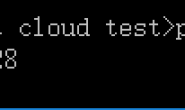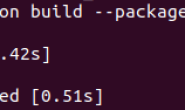将视频按照一定的帧率转化为图片,与PotPlayer进行对比,发现相同的设置,本文代码比PotPlayer保存的图片清晰度高。 代码如下:
#-*- coding: utf-8 -*-
#使用本程序的方法:
#1. 安装python3
#2. 安装numpy, 命令 pip3 install numpy
#3. 安装opencv-python, 命令:pip3 install opencv-python
#4. 将该脚本放置在存储视频的文件夹中,利用python执行此脚本。
import os
import sys
filedir = os.path.dirname(sys.argv[0]) #获取脚本所在目录
os.chdir(filedir) #将脚本所在的目录设置为工作目录
wdir = os.getcwd()
print('当前工作目录:{}\n'.format(wdir)) #打印当前工作目录
import numpy as np
import cv2 as cv;
import re
from math import ceil
def video_to_image(video_path):
print('\n-----------------------------------------------------------------------------')
print('正在处理视频:{}\n'.format(video_path))
video_dir = os.path.dirname(video_path)
video_name = os.path.basename(video_path)
image_dir = re.sub('\.','_',video_name)
image_dir = os.path.join(video_dir, image_dir)
if not os.path.exists(image_dir):
os.mkdir(image_dir)
cap = cv.VideoCapture(video_path)
# Define the codec and create VideoWriter object
fps = cap.get(5) #视频帧率
width = cap.get(3)
height = cap.get(4)
sample_rate = round(fps) #采样率,目前设置为每秒取1帧。
#print("视频 {} 的帧率为:{:.2f} 分辨率为:{} ✖ {}".format(video_path, fps, width, height))
print("视频 {} 的帧率为:{} 分辨率为:{} * {}".format(video_path, fps, width, height))
n=0
new_img_num = 0
old_img_num = 0
while(cap.isOpened()):
ret, frame = cap.read()
if ret==True:
#cv.imshow('frame1', frame)
n=n+1
if n%sample_rate == 1:
image_name = video_name+'_'+str(n)+'.jpg'
image_path = os.path.join(image_dir, image_name)
if os.path.exists(image_path):
print('{} 已经存在。'.format(image_path))
old_img_num += 1
else :
print(image_path)
cv.imwrite(image_path,frame)
new_img_num += 1
if cv.waitKey(1) & 0xFF == ord('q'):
break
else:
break
# Release everything if job is finished
cap.release()
print('视频处理完毕,共{}帧。每{}帧采1张,可生成{}张图片。\n'.format(n, sample_rate, ceil(n/sample_rate)))
print('此前已有图片{}张,本次生成{}张。\n'.format(old_img_num, new_img_num))
ext = ('.h264', '.MOV')
#遍历工作目录,并对其中指定格式的视频文件进行处理。
# def search(path):
# for p in os.listdir(path):
# p = os.path.join(path, p)
# if os.path.isdir(p):
# search(p)
# elif p.endswith(ext):
# video_to_image(p)
# search(wdir)
for dirpath, dirname, filename in os.walk(wdir):
for f in filename:
if f.endswith(ext):
video_path = os.path.join(dirpath, f)
video_to_image(video_path)




